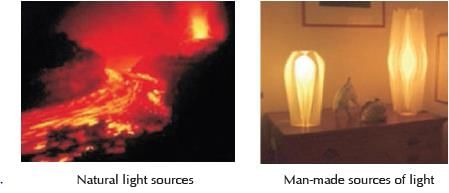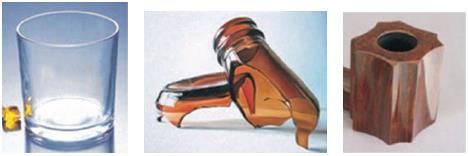Olympiad Test: Light, Shadows And Reflection - 2 - Class 6 MCQ
10 Questions MCQ Test Science Olympiad Class 6 - Olympiad Test: Light, Shadows And Reflection - 2
A girl is 2 m away from a plane mirror. If she moves away from the mirror by 0.5 m, what will be the new distance between the object and its image?
The focus of a concave mirror is __________.
When light falls on the following objects, which among them would show the darkest shadows?
A boy did the following experiment.
He kept a wooden cube in front of a screen. He had three torches with him.

Without changing the position of the cube and the screen, he placed the other two torches one after the other, in the position of torch 1, and saw the shadow.
Q. Which torch will make the largest shadow(umbra) on the screen?
Answer the following questions based on the images below.

Q. Natural light sources include sun, glowing rocks (lava from volcanoes), and ___________.
Answer the following questions based on the images below.

Q. Are candles, light bulbs, flame, CFL’s, tube-lights, kerosene lamps etc. man-made or natural sources of light?
Let us take these three objects (glass tumbler, coloured glass and wooden block).Keep them on the table. Now place a pencil box on the other side of these objects.

It was observed that in case of the glass tumbler, the pencil box on the other side can be seen clearly. In case of the coloured glass, the pencil box on the other side cannot be seen very clearly. In the third case, the pencil box is not seen at all from the other side of the wooden block.
Q. So the conclusion can be:
When an object is placed at the focus of a concave mirror, the image will be formed at ___________.
The image of an object formed in the water is:
Place a lamp close to a mug and observe its shadow on a table. Notice that the shadow formed has two parts. The darker part of the shadow, is the___________ and the lighter part is the ___________.
|
49 videos|108 docs|105 tests
|




















